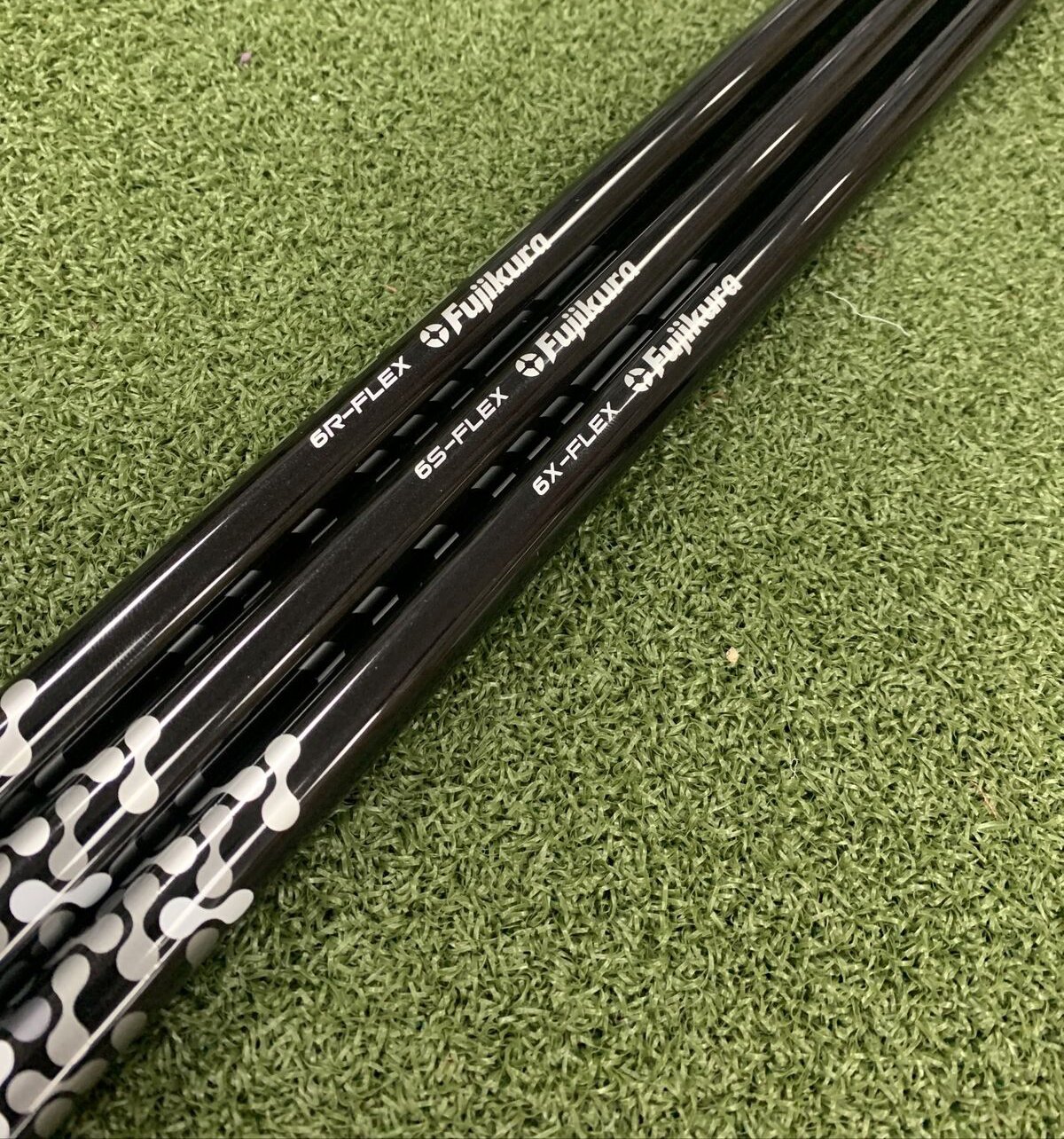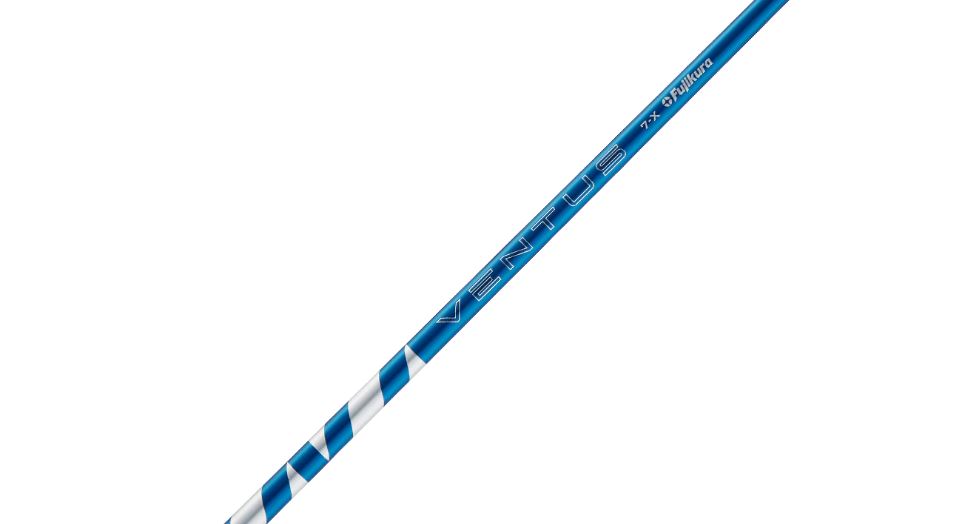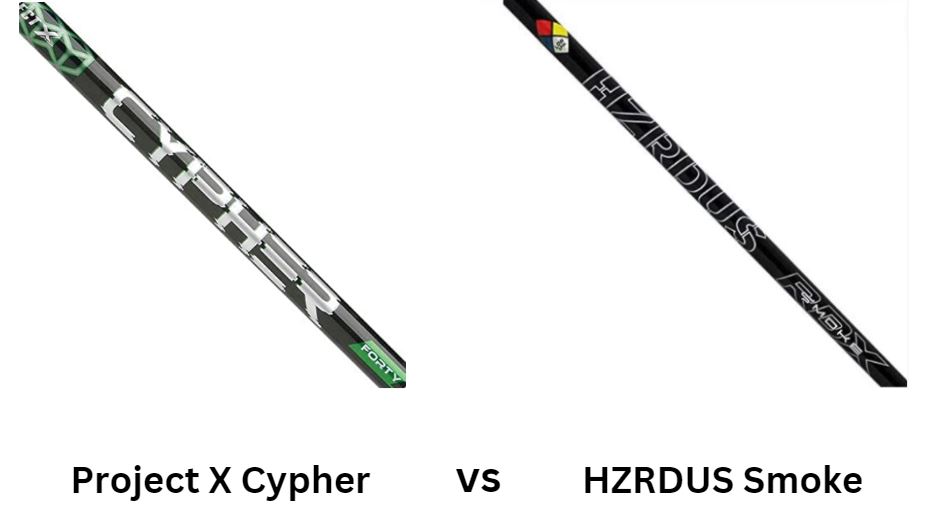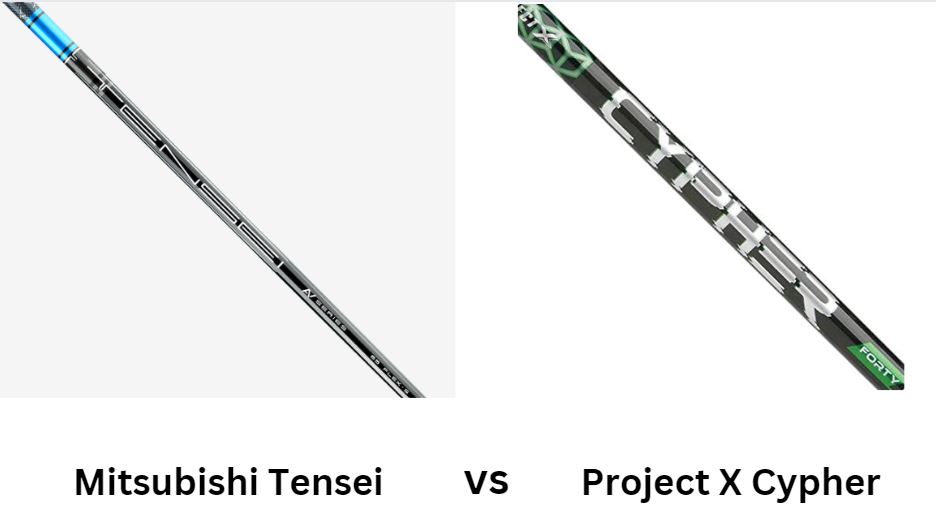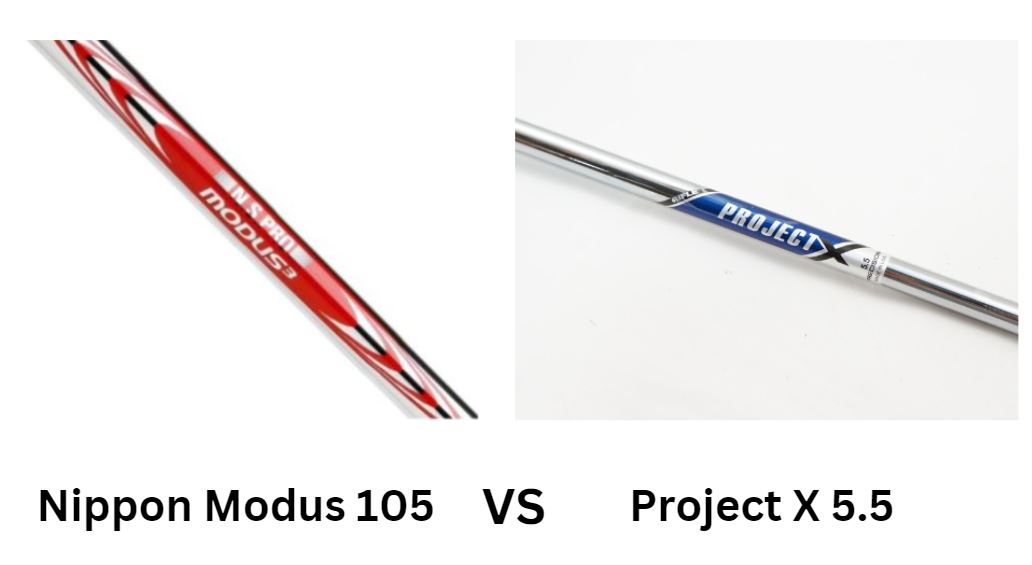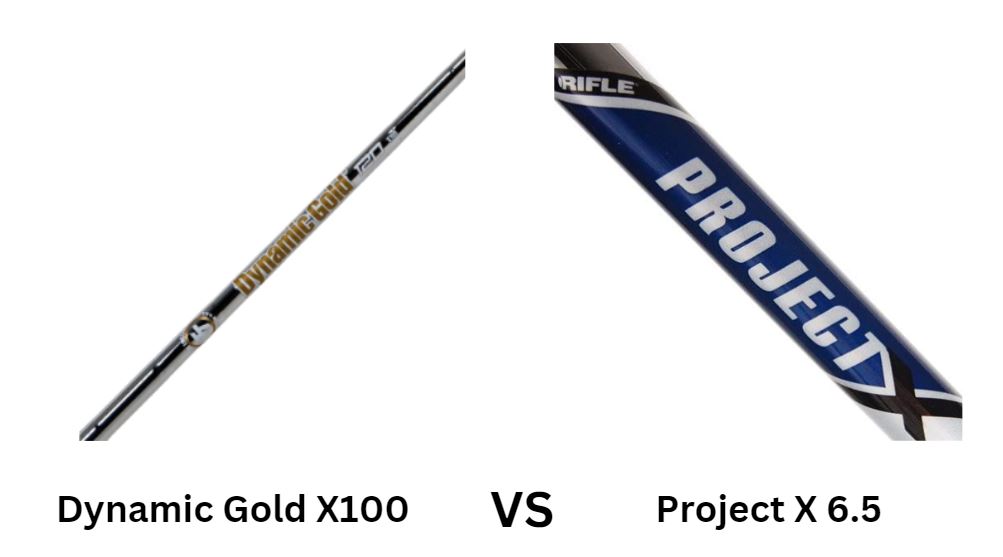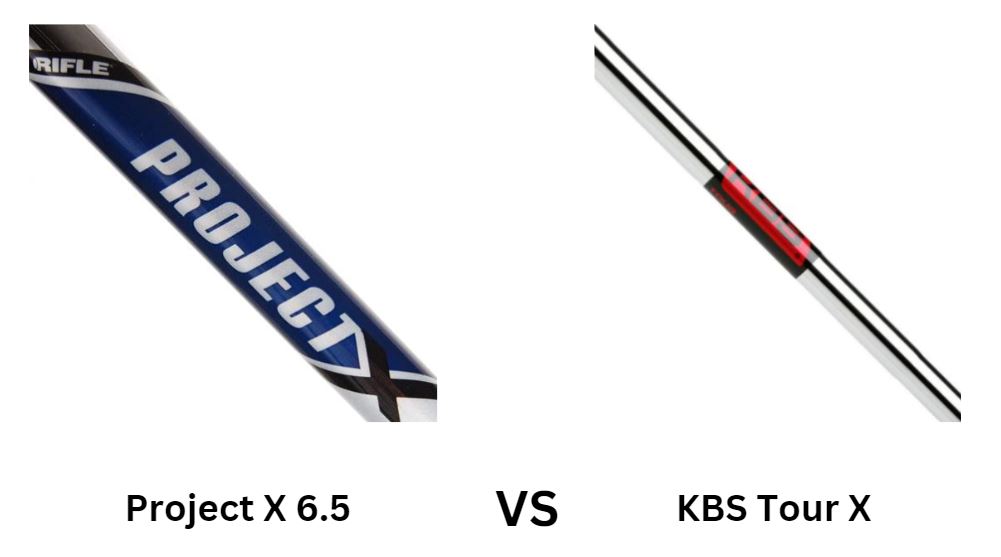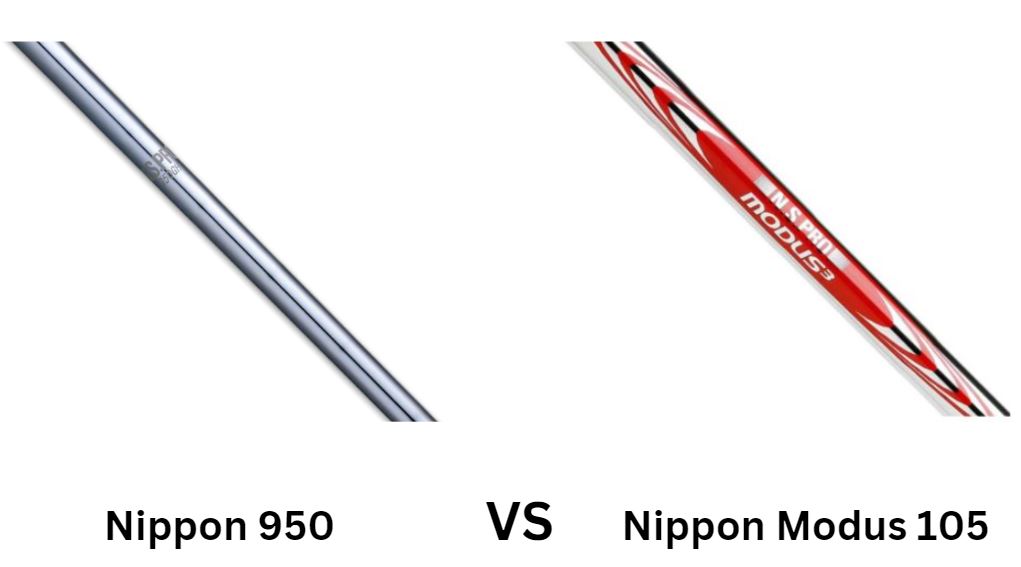Fujikura Atmos Black Shaft Review – Specs, Flex, Weight
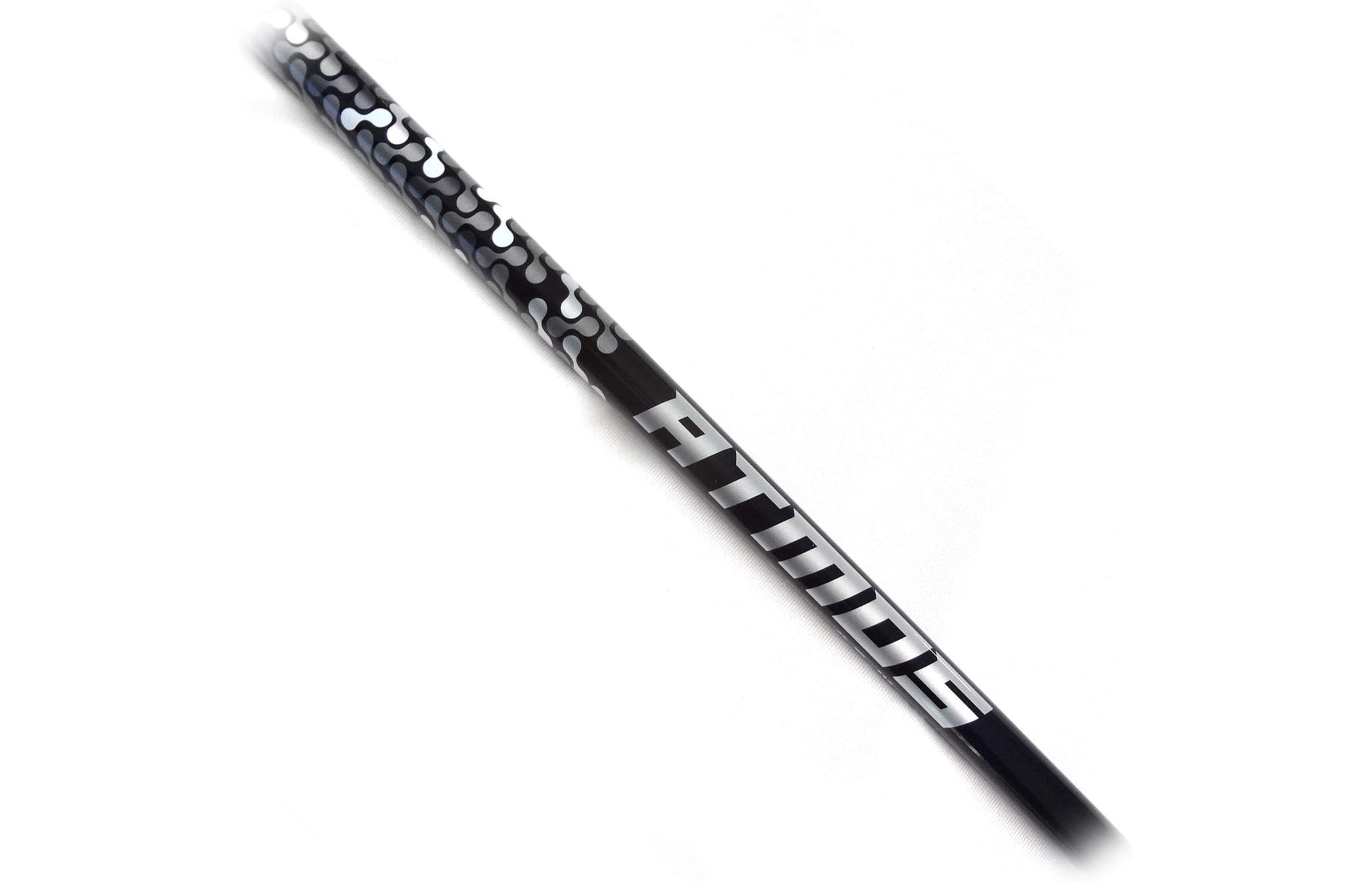
If you have the Taylormade M6 driver in your bag then you are probably already familiar with the Fujikura Atmos Black shaft.
This was the stock shaft for the M6. But the Fujikura Atmos Black may be a good shaft for your driver regardless of the make and model.
If we know anything about Fujikura shafts it’s that they are invariably smooth. The only variable is how you swing your driver. So in the following review, we will tell you exactly how the Fujikura Atmos Black performed for us and what type of player/swing style it works best with.
Fujikura Atmos Black Shaft Overview
The Fujikura Atmos Black is intended to be the low-launching, low-spinning shaft in the Atmos line.
You can also check out the Atmos Red and Atmos Blue if your swing style works better with higher launch and spin numbers. The Fujikura Atmos Black has minimal branding and graphics. In fact, the only graphics are the “separating cells” that adorn the grip section. And we like minimal branding in general because it’s very easy to overdo it and when you overdo it, you end up with a distracting shaft.
The Fujikura Atmos Black has a firm grip and tip section. There is a clear kick in the middle of the shaft that works with you, not against you. Being the lowest-launching shaft in the Atmos line, we were expecting a stout, hard-to-activate feel. That wasn’t the case. While the Fujikura Atmos Black does feel stable, you don’t need a super-fast swing speed to activate it. Even on moderate swings, you can feel the kick point boosting your club head speed.
The whole shaft feels very controlled as well. When we stood on this shaft, we didn’t lose track of the club head. If you’re comparing the Fujikura Atmos Black to typical graphite shafts, yes, it does lean slightly more on the stout side. However, it rewards you with a very smooth transition whether you swing out of your shoes or have a moderate swing speed.
Why is the Fujikura Atmos Black So Popular?
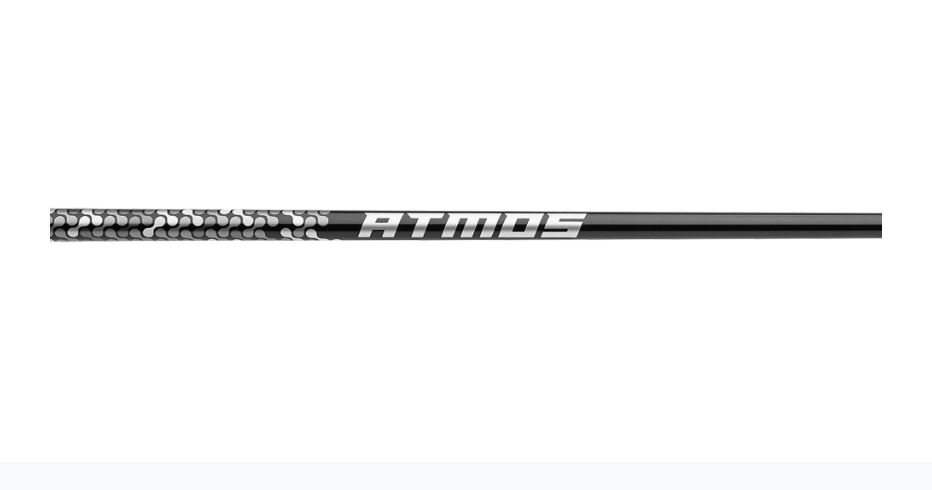
The Fujikura Atmos Black gained a lot of popularity as the stock shaft for the successful Taylormade M6 driver.
But it has endured because of its versatility. One thing that really surprised us was that despite the varying swing speed of our testers, they were all getting very similar launch monitor figures.
How Does the Fujikura Atmos Black Perform?
Speaking of launch monitor figures, the Fujikura Atmos Black produced pretty much what we were expecting.
The Fujikura Atmos Black performs as advertised: it spins low and launches mid-low. Our average spin rate with the Fujikura Atmos Black was just a hair over 1800 RPMs and our launch angles stayed in the 11-13 degree range.
And this remained consistent despite who was swinging. Of course, you can expect more distance if you are a fast swinger but the launch angles and spin rates will remain consistent despite your swing speed. Speaking of distance, our average carry distance after three swings each was 257.9 yards. Is this the longest shaft we’ve ever tested? Not by a longshot. Was it one of the most consistent shafts we’ve tested? Absolutely.
As long as you don’t have a straight up slow swing speed, the Fujikura Atmos Black will reward you with piercing launch and a strong trajectory. We loved how quick the ball was getting up and out and how long it stayed in the air.
Fujikura Atmos Black Shaft Specs
| Specs | Fujikura Atmos Black |
| Available flexes | Regular, stiff, extra stiff |
| Weight | 65g, 66g, 67g |
| Butt | .605”, .610”, .615” |
| Tip | .335 |
| Length | 46” |
What Flexes Are Available? What Swing Speeds Do They Suit?
The Fujikura Atmos Black is available in regular, stiff and extra stiff flex.
Regular flex would be good for players in the 75-80 MPH swing speed range. Stiff would be good for 81-90 MPH swingers and extra stiff would suit 91-105 MPH swingers.
What Weights Are Available? What Swing Speeds Do They Suit?
The Fujikura Atmos Black 65g would be good for 75-80 MPH swingers.
The 66g version is more for intermediate swing speeds in the 81-85 MPH range. The 67g version would likely work for players in the 86-95 MPH range.

